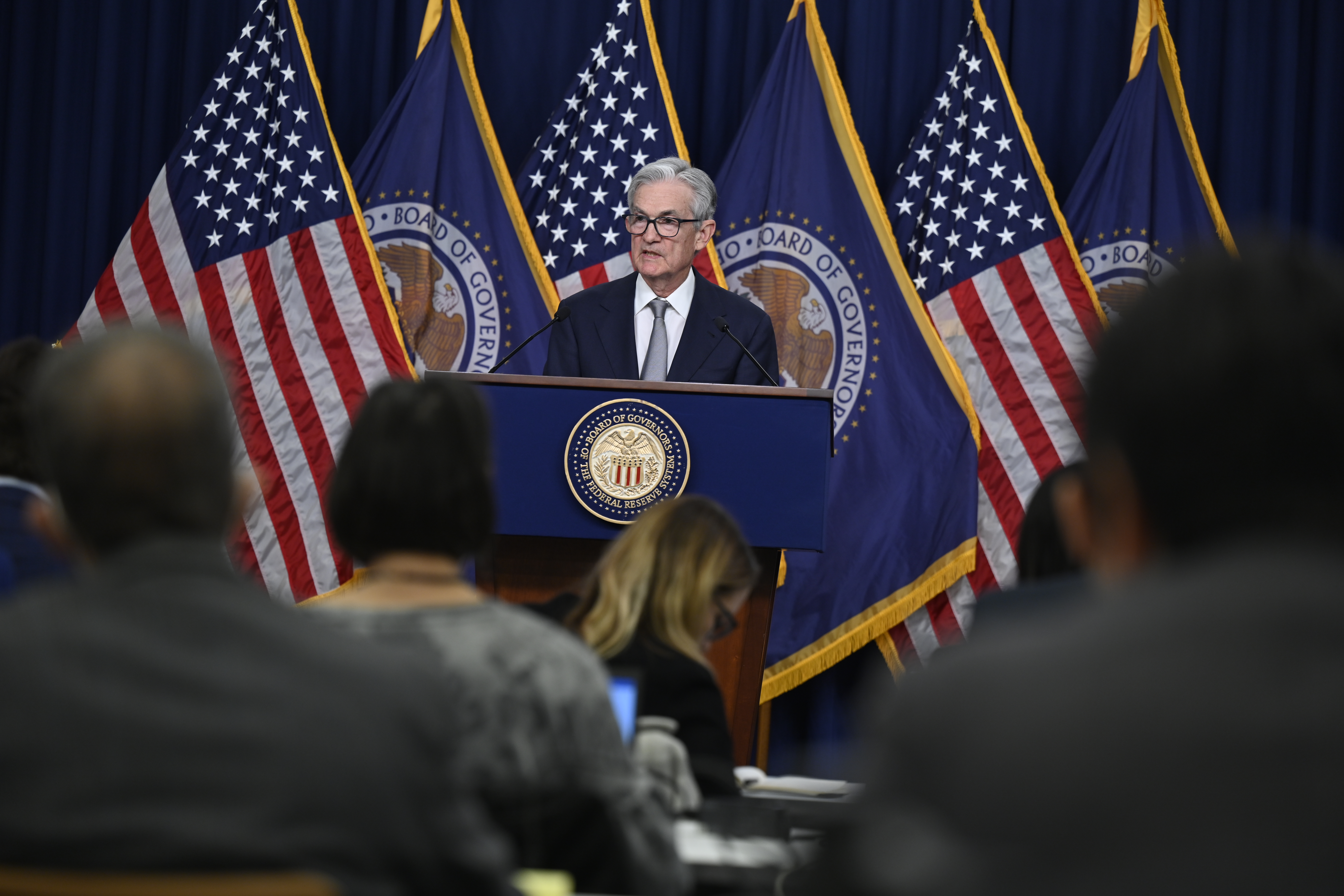Fed holds interest rate steady for second time in a row

Federal Reserve Chair Jerome Powell answers reporters' questions at the FOMC press conference on November 1, 2023. FEDERAL RESERVE/Handout
Nov. 5 (ZFJ) — The Federal Reserve maintained the interest rate at 5.25-5.50% for the second time in a row on Wednesday, Nov. 1.
This rate was set on July 26 and held steady on Sept. 20. The Fed has been aggressively increasing the interest rate since it raised it from 0.00-0.25% to 0.25-0.50% in March 2022 in order to fight stubborn inflation.
Economic activity has been expanding at a strong pace, said Federal Reserve Chair Jerome Powell. In a press conference, he cited statistics showing that real GDP rose 4.9% in the third quarter, boosted by a surge in consumer spending. Housing market activity and business fixed investment are low due to higher mortgage and interest rates respectively. The banking system is resilient.
Powell also observed that job growth is strong since payroll job gains averaged 266 thousand jobs per month, though the rate is down from earlier this year. The unemployment rate is low at 3.8%. The labor force participation rate is up, especially for individuals 25-34 years old and immigrants, meaning that the supply of workers increased, although it still does not meet the demand for labor.
Inflation is still significantly above the Fed’s target of 2%. Total PCE prices rose 3.4% over the 12 months ending in September, while core PCE prices (which exclude food and energy categories due to volatility) rose 3.7%. Personal consumption expenditures is the Fed’s preferred consumer spending index and is calculated by the Bureau of Economic Analysis, a part of the Department of Commerce.
“A few months of good data are only the beginning of what it will take to build confidence that inflation is moving down sustainably toward our goal,” said Powell. “The process of getting inflation sustainably down to 2% has a long way to go.”
The Federal Reserve seeks to limit inflation as it results in higher costs of living. The central bank’s ultimate objective is to maintain price stability. By tightening its monetary policy, the Fed applies downward pressure on economic activity, gradually reducing inflation.
Powell made it clear that, “in light of the uncertainties and risks,” the Fed’s Federal Open Market Committee will continue to decide on further rate hikes on a meeting-by-meeting basis.
“Reducing inflation is likely to require a period of below-potential growth and some softening of labor market conditions,” Powell said.
The Fed is not currently considering rate cuts, he noted, saying that the focus is still on whether they have “achieved a stance of monetary policy that’s sufficiently restrictive to bring inflation down to 2% over time, sustainably.”
References
- Federal Reserve - Federal Reserve issues FOMC statement - https://www.federalreserve.gov/newsevents/pressreleases/monetary20231101a.htm (ARCHIVE)
- Federal Reserve - Transcript of Chair Powell’s Press Conference November 1, 2023 - https://www.federalreserve.gov/mediacenter/files/FOMCpresconf20231101.pdf (ARCHIVE)
- Federal Reserve - FOMC Press Conference, November 1, 2023 - https://www.youtube.com/watch?v=ohuJH9fld3w
